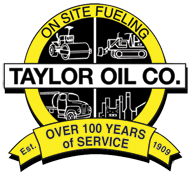Fuel Tank Testing: How Often Should I Test? – Are you the manager of a large fleet? You probably realized early on that it’s more cost-effective and efficient to place a fuel storage tank on your property. This way, you can fuel up whenever you need to, without having to call your fuel provider for a mobile delivery every time. However, while convenient, this option also puts maintenance and upkeep on your shoulders.
As you are aware, proper maintenance of your tank is imperative. Failure to do this can lead to maintenance issues and costly repairs to the tank or vehicles. It can also be a safety concern, as it could lead to a fire or explosion hazard. You must also remain in compliance with government regulations affecting the testing and inspection that is needed for the public’s peace of mind. Fuel spills, even small ones, can pose a big hazard to people and animals. Those incidents also tend to make the evening news headlines and put your company in a bad light.
The best way to ensure you are operating safely is to test your fuel tanks regularly. Here are some tips:
- Take a fuel sample once a year to screen for contamination. Water and biologicals (particularly in relation to diesel) are the two main concerns here. If you have water in your tank, this can lead to engine failure when transferred to a vehicle. Bacteria and fungi crank up the acidity levels on your fuel, which is extremely corrosive. You will see a drastic reduction in the lifespan of the tank. You can add biocides to your diesel fuel to reduce biological contamination.
- Perform a tank integrity test. It is required by the EPA; however, they don’t specify how often. At the same time, do a visual inspection. Hire an engineer to inspect your tank. How often you have this done will depend on location and tank design. Integrity testing is especially important if you’ve recently had a repair done, as these can damage the tank in small ways that you may not even realize. Train your personnel to do frequent visual inspections and report back anything out of the ordinary.
- Test your high liquid level alarm every month to prevent the chance of spillage.
As we said above, many factors will determine how often you should test your tank. It will depend on the following:
- The design of the tank, as some are more likely to have issues than others.
- The tank’s age: if you’re using an old tank that the previous owner left behind, it’s probably easier, safer and more cost effective to just replace it than keep repairing it.
- The tank’s location, i.e., wildlife areas.
- How quickly fuel cycles through the tank. If you have fuel that is sitting around for longer periods of time, you should check it more often for contaminants. Got a separate tank for generator fuel? Test it often and use the right biocides.
- Specific state and local regulations that oversee tank inspection.
Being the owner of your own fuel tank is very convenient. It saves you money and employee time plus it boosts your productivity. However, it also comes with a higher level of responsibility in terms of testing and maintenance.
To keep your fuel tanks running at capacity, call Taylor Oil today for service and fueling. We also offer tank rentals for your convenience.


